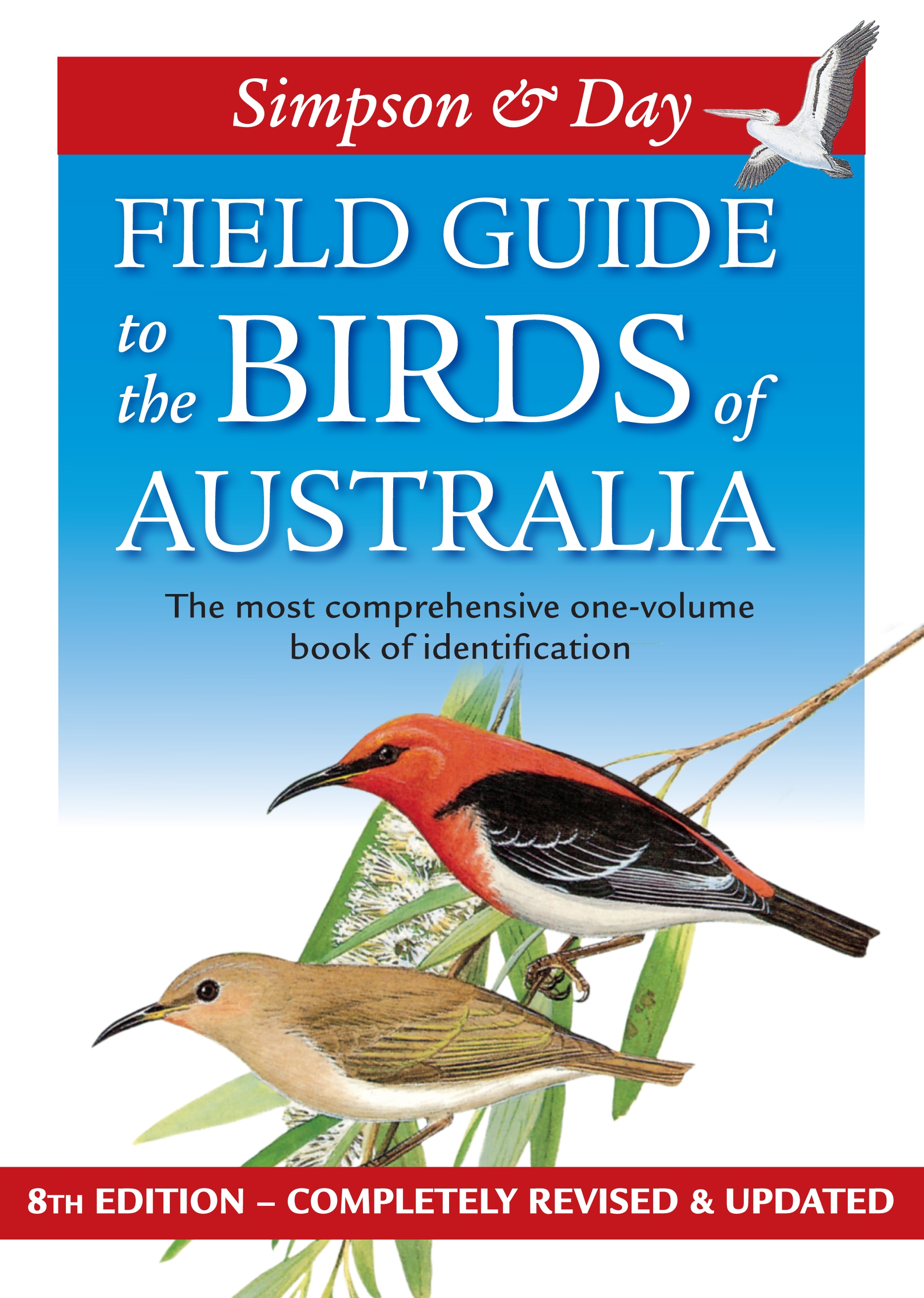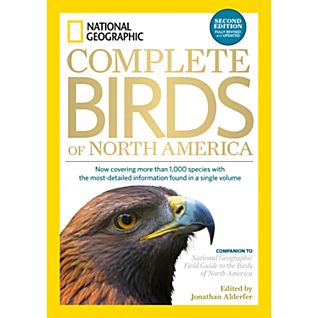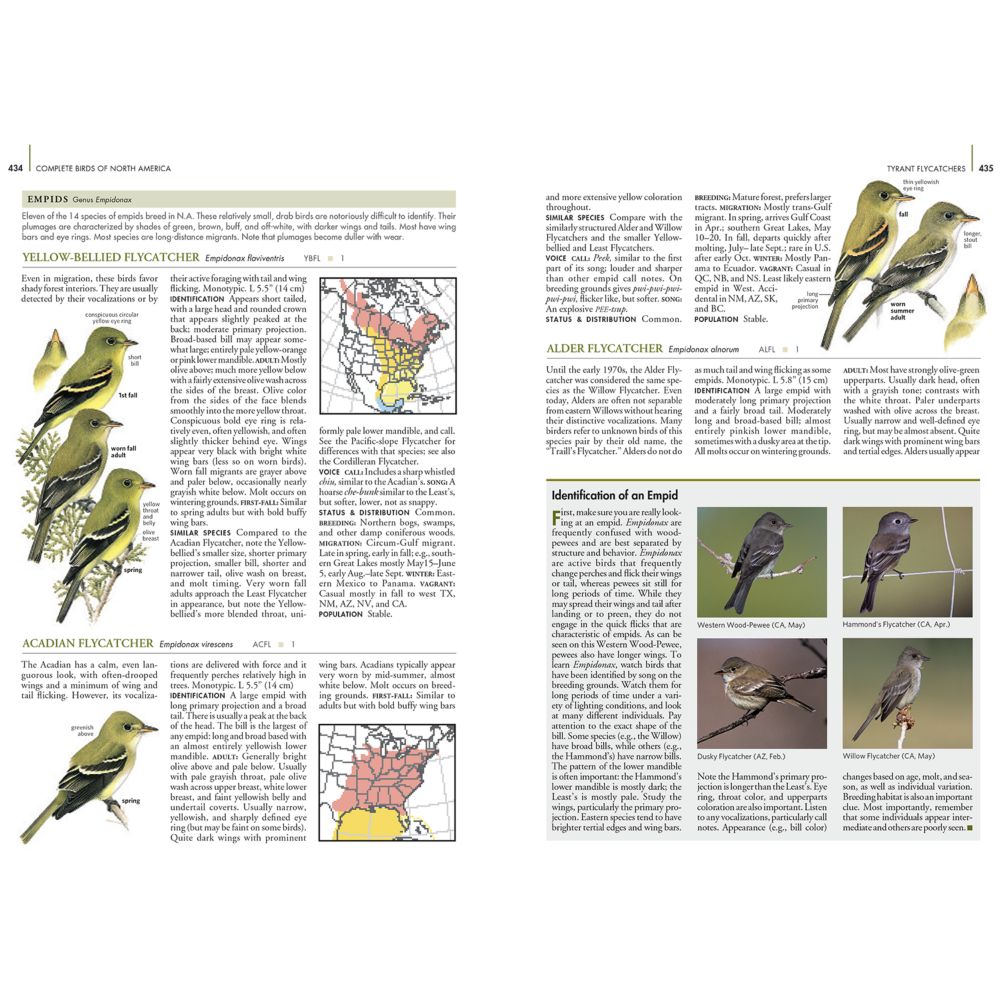Review: National Geographic Complete Birds of North America
National Geographic Complete Birds of North America, 2nd Edition: Now Covering More Than 1,000 Species With the Most-Detailed Information Found in a Single Volume,
Edited by Jonathan Alderfer, with Jon L. Dunn, maps by Paul Lehman
National Geographic Society, October 2014.
ISBN-10: 1426213735; ISBN-13: 9781426213731
744pages; 10.1 x 7.2 x 1.8 inches
This is a truly magnificent volume and one I am pleased to add to my library. Although I live in Australia and do most of my birding here I have been birding in a number of non-Australian countries. Sadly, I have yet to spend any time birding in the North American continent, a state I would like to correct sometime soon. This wonderful volume just adds a keen impetus to that desire.
I did not buy the first edition of this great work, so I cannot make comparisons. It has been “fully revised and updated” so I will have to take the editor’s word for that. There has been a significant increase in the number of species covered, now numbering over 1000. Edited by Jonathan Alderfer, this volume is a natural companion to the National Geographic Field Guide to the Birds of North America.
Look at the numbers
This monumental work stacks up well as far as the numbers are concerned:
- a total of 744 pages
- Over 1000 species featured (compared with 962 in the 1st edition and 990 in the Field Guide)
- Over 800 distribution and migration maps
- 150 full colour photographs
- 9 photographers
- Over 4000 illustrations
- 21 artists
- 89 family groups included
- An interesting group of rarities discussed
- The text draws on the combined expertise of 25 birding authorities
- Two pages of references to Additional Reading
Format and layout
Each family of birds has a short introductory essay, followed by thorough coverage of each species in that family. Each species is then given a thorough coverage in the main body of the text, including:
- a general introductory paragraph
- Identification details (including male/female, juvenile and plumage variations)
- Geographic variation (where appropriate)
- Details of similar species
- Voice
- Status and distribution
- Population notes, including changes in numbers
- Range maps
- A small, field guide type illustration
- A photograph (selected species)
Range maps
The colour-coded range maps are very detailed and include:
- breeding range (salmon)
- year-round range (purple)
- winter range (blue)
- migration range spring and autumn (orange)
- migration range mainly in spring (green)
- migration range mainly in autumn (yellow)
- a range of other symbols (eg arrows showing direction of migration – see below)
Birds in flight
One of the useful details include the illustrations showing different aspects of a species in flight. This is particularly handy for those species birders see more often in flight rather than sitting or perching.
Concluding comments:
Overall, this is not only an impressive publication, it is immensely useful and helpful. It is by no means a thorough scientific handbook featuring and summarising all the current knowledge on each species; other handbooks do not far more effectively. (As an aside, it is nothing like our Handbook of Australian, New Zealand and Antarctic Birds (HANZAB) which is in 7 volumes, each of over 1000 pages of small print.) It doesn’t pretend to be an exhaustive authority on all things birds in North America. However, it succeeds admirably in being a single-volume reference to all the species of one continent, easy to read, easy to use and a delight to read – or just browse. It will delight all birders, from casual and inexperienced backyard birders through to field-hardened experts.
All I have to do now is:
- Find space on my bookshelf for this new volume
- Save up for a birding trip to North America.
Simple.
Good birding.
Disclosure: I would like to thank National Geographic for kindly providing a review copy of this book.
Further reading:
- National Geographic Pocket Guide: Birds of North America
- National Geographic Complete Birds of North America 2nd edition: a book review
- Review: Brushed by feathers by Francis Wood
- Review: a Field Guide to the Birds of Colombia
- Review: A Field Guide to the Birds of Australia (8th edition, Simpson and Day)
- A guide to the birds of East Africa: a novel
Review: Birds of North America
Review: Pocket Guide to the Birds of North America, National Geographic, March 2013.
Authors: Laura Erickson and Jonathan Alderfer.
I have been birding in a number of countries other than Australia and have generally enjoyed my experiences. On all of my trips, watching and photographing the local birds was secondary to being a tourist. One continent I would love to visit someday is North America. I was with this background then that I looked at this Pocket Guide.
When I do undertake my first trip to America, this handy pocket sized guide will be an essential part of my packing. Literally compact enough to fit in a pocket, it will not take up much room or weight in a backpack when touring and birding. While a complete field guide to the birds of North America would have to cover over 1000 species, this handy little book covers only 160 of the “most common and iconic” species.

Aimed at inexperienced birders, children and those who don’t want to carry a larger, heavier volume in the field, this is an ideal beginner guide. I dare say it would easily stimulate a greater interest in birds in anyone who has this book, being thorough, colourful and very easy to use. To assist these people, a handy Visual Index of the main bird families is on the inside front cover with another Quick Find Index inside the back cover.
Introductory section
To help beginner and inexperienced birders, as well as those with just a passing interest in birds, a very readable introductory section covers the following topics:
- Invitation to birding
- Why learn Bird Identification?
- Where to find birds
- Optics
- Using this filed guide (including a simple illustration of the parts of a bird)
- Taking it to the next level
Species entries
Each species represented in this guide has a dedicated page to it with the following entries:
- Common and scientific names
- A small map showing distribution
- a photograph of the bird in a typical pose
- a small sketch showing the bird perching (and flying if there are identifying features on the wings)
- a Key Facts sidebar
- A short descriptive text (usually about 100 words)
Some family groups also have an additional double page spread illustrating a dozen or more other species not included in the guide. These include pages on raptors, ducks, and sparrows.
Rating: 5/5 – this guide successfully and beautifully achieves all it sets out to do.
All I have to do now is save up for a trip to America.
Good birding.
Disclosure: I would like to thank National Geographic for kindly providing a review copy of this book.
For more information about this book, click here.
Review: A field guide to the birds of Colombia

Colombia in South America is every birder’s dream destination. With well over 1800 species – more than any other country – its vast range of wonderful species is an attraction many find irresistible. With the relative stabilisation politically in the last few years, many birders are making this a “must visit” country. I wish I could join them. Maybe one day.
I bought a copy as a gift for a family member with close ties to Colombia. Before giving the guide as a present I must admit I spent quite a few hours browsing – and dreaming. Would I one day be able to afford to travel there and see some of the colourful birds covered by this guide?
Colombia has been without a modern field guide for some decades. This volume fills the void admirably, covering every species ever recorded there. The authors note, however, that the forthcoming Spanish edition may well have a few additions to this, the English version. Species are being added every year as new knowledge of the nation’s natural environment emerges.
The authors have done an amazing job covering every bird species in a country so rich in bird life. This guide, despite covering every species, is lightweight, compact, thin and would travel easily in a backpack – or a large pocket. It is arranged in an easy to use manner with every species illustrated, many with both male and female plumage as well as some juvenile plumages. Where helpful to identification, species are shown in flight. That’s no mean feat with over 1800 species in only 225 smallish pages!
They have achieved this compactness by keeping the illustrations small; most are 3 – 4 cm and are to scale compared with others on the same page. Most pages cover 6 – 8 species on average. In addition to the illustrations, the information is very succinct and basic:
- Common English name,
- Taxonomic name,
- Size from head to tail (centimetres and inches)
- A short one or two sentence description of its preferred habitat and diagnostic behaviours.
- A tiny map of known distribution appears in each species’ box, including an altitudinal indicator which is especially helpful in the mountainous regions.
- Some species descriptions also cover a brief indicator of the song or call.
All that in only 225 pages. Amazing.
I’d recommend this book just for the fun of looking at all the beautiful birds even if you are not planning a trip to Colombia. Warning: looking at this book may have you busily planning your next birding trip – to Colombia.
Authors: Miles McMullan, Thomas D. Donegan, Alonso Quevedo
Title: Field Guide to the Birds of Colombia.
Publication: 2010 by ProAves in Bogota, Colombia.
Worldwide Waders web site
I find identifying waders and shorebirds can be a very confusing pursuit. So many of our Australian wading birds look very similar in the field. I try to take note of the major characteristics of the plumage, consider carefully the size and shape, watch the habits of the bird in question and think I know what it is. Going to the field guides just confuses the issue all over again. [sigh]
If you see plenty of this kind of bird, or you want to learn more about waders and shorebirds, go to WorldWaders Posterous. This blog features wading birds from all over the world. Plenty of good photos are posted there too.

Red-kneed Dotterel
Review: Field Guide to the Birds of Australia 8th edition

Field Guide to the birds of Australia 8th edition
Everyone interested in birds needs at least one field guide to help with the identification of the birds being seen.
I have several. Ten, in fact. Six of them are Australian field guides, plus I have one covering the birds of South East Asia, one of the Indian sub-continent and two for the British Isles and Europe.
Now I have another one! This field guide is being published TODAY.
Field Guide to the birds of Australia 8th edition
by Ken Simpson and Nicolas Day
(with Peter Trusler)
Ease of use
Many years ago I was given the first edition of this very popular field guide. It has remained largely on my bookshelf in my office, referred to from time to time but never taken out into the field. This was because of its bulky size and being in hardback couldn’t really be called a “field guide” as it was too big to carry around. Recent editions have been far more portable, and this new edition is excellent: convenient size, portable, and at 826 grams just the right weight.
Features:
There are many fine features in this edition. There are so many I can only highlight those I think are worth mentioning.
Colour plates:
There are 132 full page colour plates throughout which illustrate every bird found in Australia. The publisher’s use of the word “comprehensive” on the cover is no idle boast. Each colour plate shows about five or six different species, most shown in typical poses to help identification. Birds most often seen in flight, such as eagles and sea birds like terns, are also shown in flight. The colour rendition of each species appears very good in most cases, especially those I am very familiar with. One page I’d take exception to is the plate showing White-eyes and Silvereyes, as the birds I’ve seen in this group have far more vibrant colours. The ‘red’ robins suffer the same fate, along with some of the fairy-wrens. On the other hand, the rendition of the cuckoos, parrots doves and pigeons are very colourful and well done. The birds of prey (owls, hawks, eagles and kites) are brilliant.
Text pages:
Opposite each colour plate where the birds are illustrated is the text page. Each species has a short description of the bird, including sexual and race variations. The text also includes details of size, juvenile plumage, voice and preferred habitats. Breeding information is included in a separate section. The text is the part of this guide of which I am most critical. For my needs it is too short, too concise. In many cases I will need to go elsewhere in my library to find the information I need. For the casual bird watcher it is quite adequate. I concede that to expand this section to please me would probably add 20-30% more pages to the volume making it less portable in the field. The authors must have had some tough decisions to make along the way.
Next to the text they have included some 900 black and white sketches showing identification features hard to include in the text. This is an excellent feature. The text section is complete with a small map showing normal breeding and non-breeding distribution. Another excellent feature of the maps is to delineate the range of each race of the species, along with extra notes on some species where deemed necessary.
Breeding information:
A separate section details comprehensive breeding information. This includes a brief description of the nest, number and colour of eggs, incubation periods and what the hatchlings look like. It includes fledging periods and some notes about the care of the young until independence. Each species also has a bar graph showing typical breeding seasons.
Vagrant Species:
Special note must be made about the 21 pages of vagrant species included at the end of the colour plates. These pages show sightings of species not normally present in Australia (ie vagrants) but which have been officially accepted on to the Australian list of birds. Some have only been seen the once, others on only a handful of occasions.
Other features: these are too many to review here. All I can do is add a list:
- A water resistant cover – useful on wet days in the field.
- Help for beginners on how to observe a bird.
- Where birds live – a useful, informative section on variations in habitats.
- Australian island territories checklists
- Hints for birdwatchers
- An extensive glossary of words used by birders.
- A list of bird-watching organisations.
- Core library – an extensive list of publications the authors suggest for keen birders to build up their own reference library.
Conclusion:
We are so blessed here in Australia with so many excellent birding field guides. Each has strengths and weaknesses, so the choice of which to buy becomes an agonising one. I have no hesitation in recommending this new edition because of the comprehensive coverage of Australian birds in a compact, easy to use volume. An truly incredible amount of information has been packed into its 381 pages. The publisher claims to have sold over 500,000 copies in earlier editions. This new, completely revised 8th edition will continue that trend and sell many more copies in the future.
While I would like more information in the text this is just a personal need; not everyone needs the detail I require. For the vast majority of people with a passing interest in our birds, this is an ideal guide to have on the bookshelf or in the car or rucksack when travelling. At a RRP of $39.95 it is also very affordable.
Disclosure: The publicist of Penguin Books Australia kindly sent me a review copy a few weeks ago. Thanks Leisel.
References:
- Simpson, Ken, and Day, Nicholas, 2010, Field guide to the birds of Australia 8th edition. Viking (Penguin Books), Camberwell, Victoria.
- Penguin Books Australia – click here to visit their web site. Click here to read an extract.

A page from the field guide

